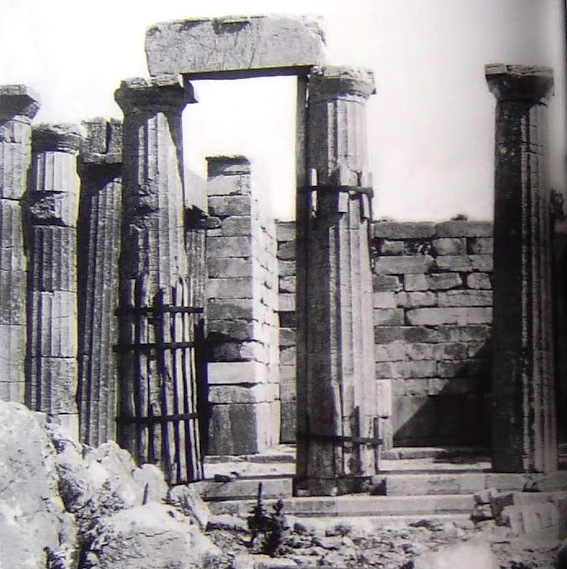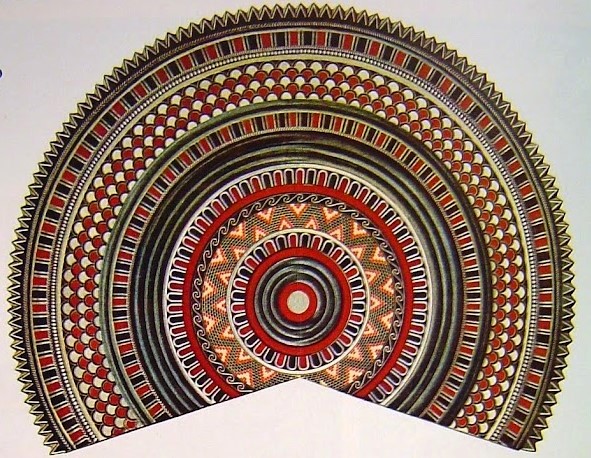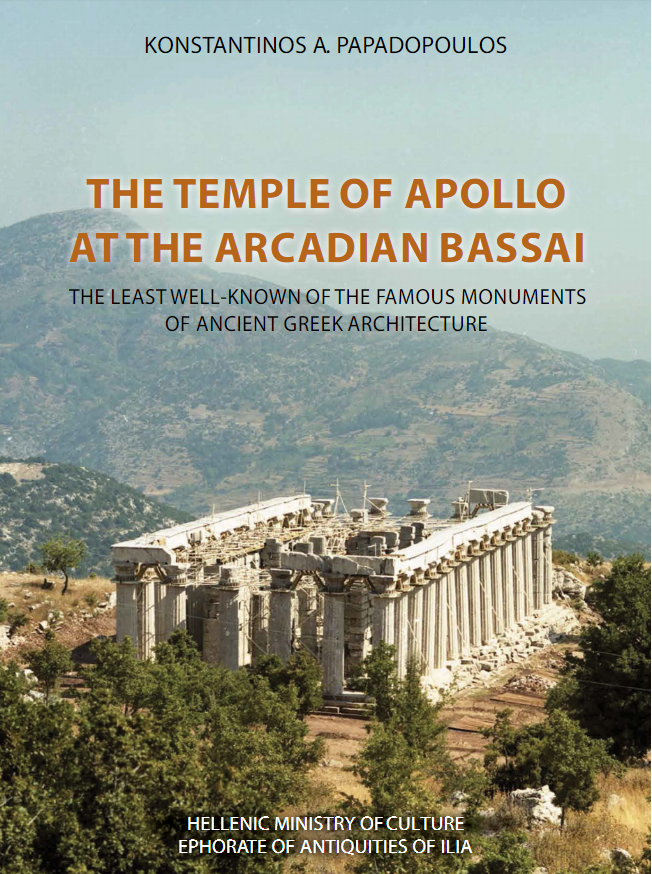The first conservation treatments
After the establishment of the Greek state, especially in the last years of the 19th and the beginning of the 20th century, many scientists were involved in the research and study of the monuments of Bassae, and with the extremely difficult task of preserving and restoring the Temple of Epicurious Apollo.
The first endeavor to protect the monument took place in 1880 and focused on three columns that were threatened with collapse. The works carried out at that time, concerned the support with oak beams of a column on the west side which suffered a large deviation from the vertical axis, as well as the reinforcement with wooden inserts of the drums of two other columns and their binding with metal rings.

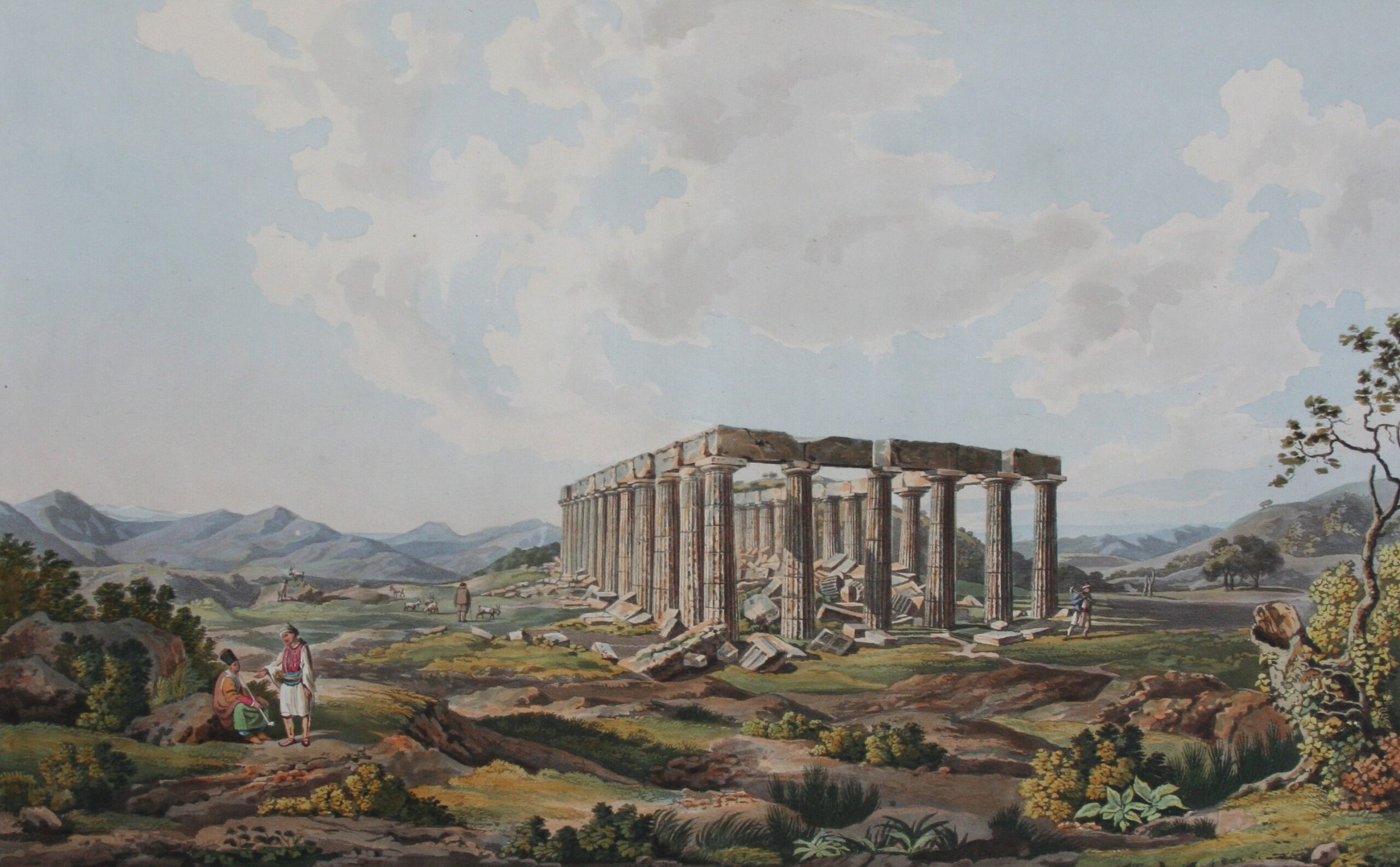
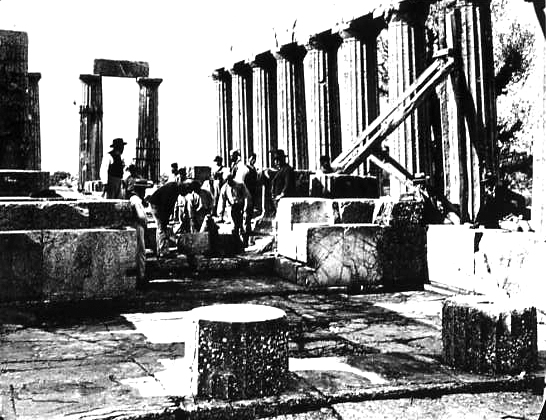
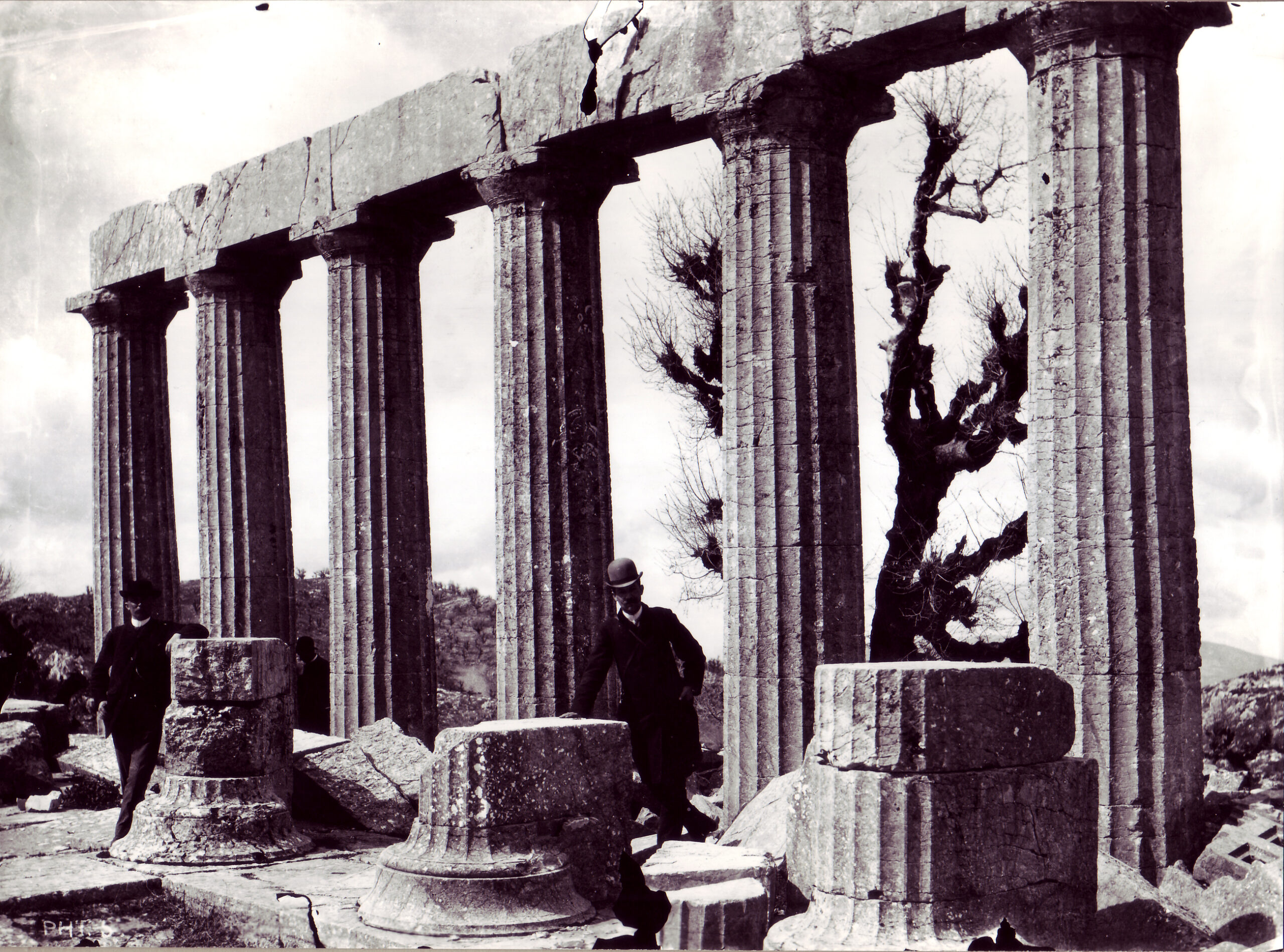
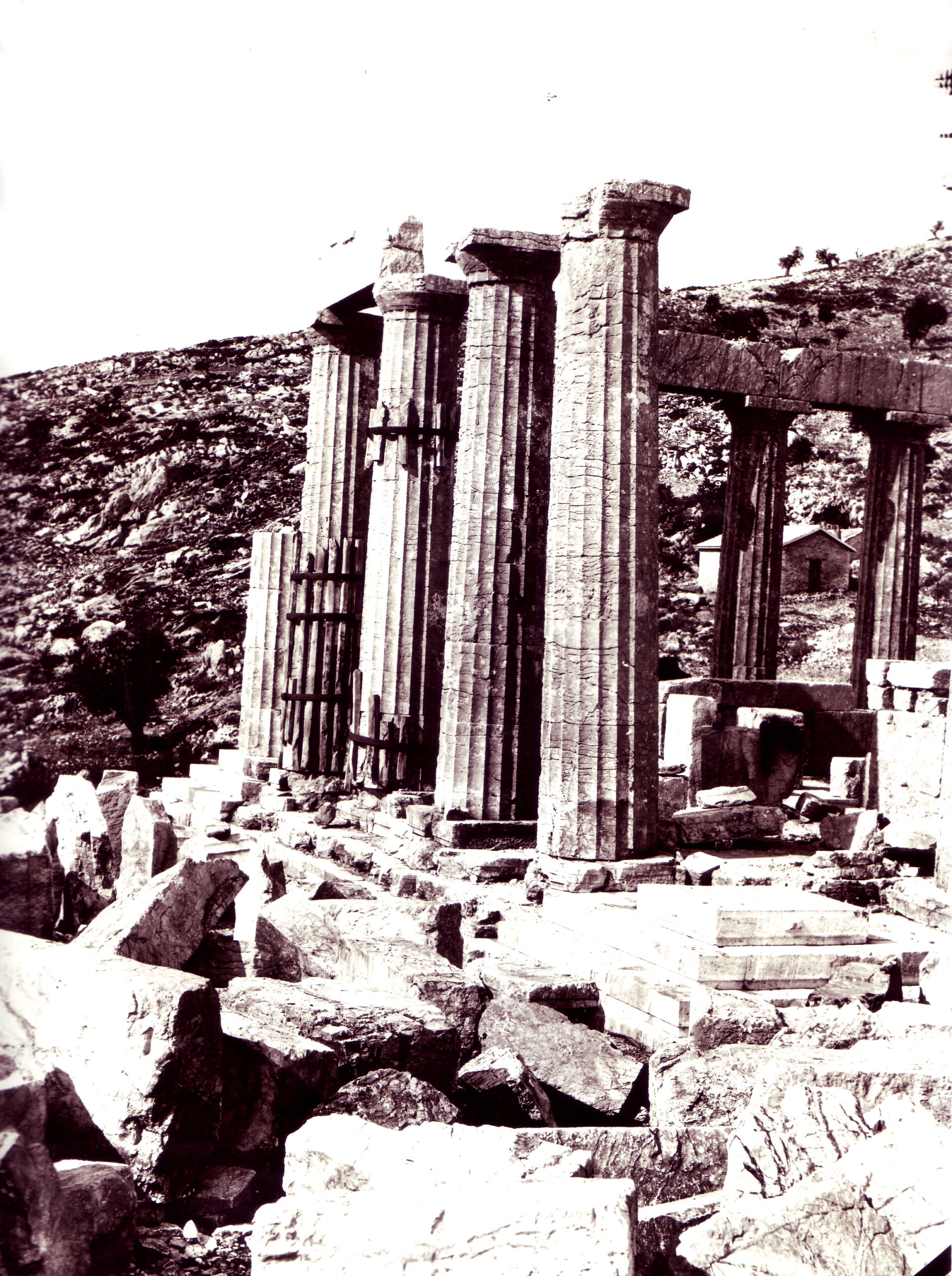
Early 20th century
From 1902 the systematic research was undertaken by the Hellenic Archaeological Society, initially under the general direction of K. Kourouniotis and with the assistance of the Commissioners K. Romaios and P. Kavvadias.
Panagiotis Kavvadias, General Superintendent of Antiquities, was in charge of the restoration in collaboration with Nikolaos Balanos, Legal Engineer responsible for the corresponding projects of the Parthenon, while the contribution of tracer Nikolaos Ioannitis was important.
1902 – 1908
Until 1908, most of the walls of the nave were reconstructed and restoration work was carried out on the floor and the colonnade of the temple. Thus, despite the weaknesses and errors of the restoration project, the shape and icon of the temple was formed which still remains the same to this day. The virtues and beauty of the edifice were broadly recognized in a even greater extend.

“….The restoration work of that period has been praised, but also well documented. In any case, however, and despite the damage found on repositioned stones as a result of their restoration, it must be emphasized that the head of the works, Nikolaos Ioannitis, rather isolated, and with a lack of specialized collaborators, succeeded in a short period of time to restore the building very much close to its original form, offering the temple a significant part of its lost glory.
Since then, informed visitors to Bassae have been able to understand the configuration of the very special interior spaces of the monument, the intelligent combination in it of the three rhythms of ancient architecture, but also, in general, the interesting coexistence in the building of features of different historical periods…” *
Archaeological Society – Researchers
Due to the great interest it shows in the evolution of ancient Greek architecture, the monument also attracted many renowned scientists from abroad who thoroughly dealt with its various architectural peculiarities and its dating. They are W. Dinsmoor, W. Hahland, C. Hofkes-Brukker, G. Roux, A. Mallwitz, H. Knell, U. Pannuti and F. Cooper.
1950 – 1980
During the years 1959, 1970 and 1975-1979, the entire area to the north and northwest of the temple, as well as the interior of the building, was investigated by the archaeologist N. Gialouris, in which the architect and archaeologist I. Travlos also participated.
Operations 1965 – 1966
Research by both the Archaeological Society and the Archaeological Service continued in the following years.
Limited restoration work on the monument was also done in 1965 – 66, after the earthquakes that occurred in the area. These works, which were carried out under the supervision of the Director of Restoration Charalambos Mpouras, included rescue operations on three architraves and the dismantling and restoration of the second of the eastern columns of the north side of the temple. A detailed design and photographic recording of the operation was also carried out.




